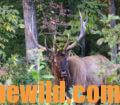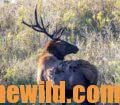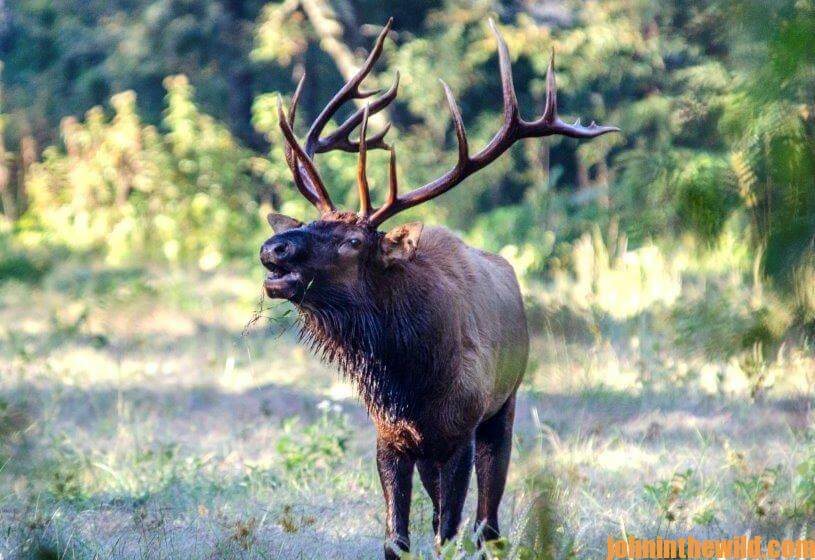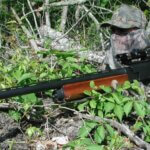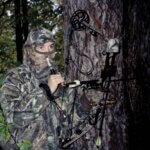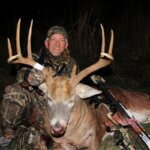Editor’s Note: Shawn Fulton has been guiding for elk for 12 years and currently guides and outfits for Spotted Bear Ranch (http://www.spottedbear.com/) in northwest Montana, just south of Glacier National Park.
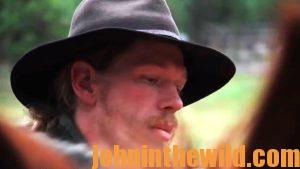 * Early-Season Elk:
* Early-Season Elk:
We hunt in the back country on national-forest lands, and our hunts start the first week of September for archery hunting. In early season, we’re targeting bugling elk. On or about September 15th, hunters can use rifles. The first two weeks of September we’re targeting the rut with our bowhunters (Be sure to check the state’s regulations where you’re hunting).
* Late-Season Elk:
At Spotted Bear Ranch, we offer late-season elk hunts too, but on those hunts, we don’t have any running water or any toilets. Late-season elk hunting is a difficult time to try to take an elk. Around the end of October, the general elk rifle season begins. At the beginning of rifle season, this past year in 2020, the temperature was -2 degrees. We consider our late-season starting on the third of October and running until the end of November. The best chances of finding elk in the late-season, if there’s a lot of snow and bad weather is at the elk’s wintering grounds at lower elevations, the bad weather will boot the elk out of the high country and cause the elk to move. We hope not to have to go to the tops of the mountains to hunt elk in the late season. Once we reach a place where getting there is brutal, that’s about the elevation where the elk will be holding at this time of the year.
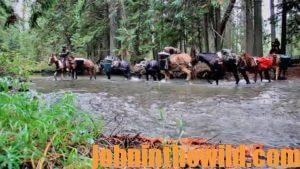 We use horses to cover ground in the late season and may have to ride for 3 to 3-1/2-hours to get to the place where we want to start hunting. We find the elk by looking for their tracks in the snow. In the mornings, we hunt them moving from their feeding places to their bedding spots. We hunt them in the afternoons when they’re going from their bedding areas to their feeding sites. We’ll take a stand between those two locations on our hunts.
We use horses to cover ground in the late season and may have to ride for 3 to 3-1/2-hours to get to the place where we want to start hunting. We find the elk by looking for their tracks in the snow. In the mornings, we hunt them moving from their feeding places to their bedding spots. We hunt them in the afternoons when they’re going from their bedding areas to their feeding sites. We’ll take a stand between those two locations on our hunts.
We start off looking in places where we’ve found elk in the late season in past years. The guides usually get up from 3:00 am – 3:30 am. After a quick cup of hot coffee, we’ll go out to the horses and get them saddled and ready for the hunters. The hunters usually will get up from 3:45 am – 4:00 am and have breakfast at 4:30 am. Most of the time we’ll ride 1-1/2-hours in the dark – other times we’ll ride for 3 to 3-1/2 hours in the dark. We like to be in elk country just about the same time the sun begins to come up, because that’s generally when the elk will start moving from their feeding regions to their bedding spots. On most elk hunts, we want to get close to where we’re going to hunt at first light and reach a high point where we can start glassing for elk. Late-season elk hunting is best described as a lot of sitting and glassing open places, watching tree lines and trying to determine where the elk should be traveling. Then we take a stand between the bedding and the feeding places.
Also in the late-season, the elk will start leaving their feeding areas just at first light to get to the regions where they want to spend the day. I think the elk must keep a calendar and mark the date that hunting season starts. In August, before elk season begins, seeing bulls on a ridgeline and in open places isn’t uncommon. But as soon as hunting season starts, the elk seem to vanish and move into thick cover.
The places where we hunt have numbers of thick areas in them. There aren’t very-many open spots where we can glass a huge section of land to attempt to see elk. We usually have to glass small pockets of open places to locate our elk. We hunt primarily on the Spotted Bear River Mountains, close to the Continental Divide – only 13-14 miles away from the ranch. We’re hunting the Flathead National Forest.
Usually we start looking for elk where we’ve located them in past years, however, if a pack of wolves has moved into where the elk have been and scattered the herd, we’ll have a much-harder time finding them. Another problem is because we’re hunting public-hunting lands, other hunters may find our trails and follow them into the elk herd we’ve discovered and either take a bull out of that herd and/or spook the elk. In our section of Montana, a big bull elk will be one with antlers that score around 350 on Boone and Crockett (B&C). We had one client in the 2020 season that took a bull scoring 337 on B&C, which was a nice bull for our area.
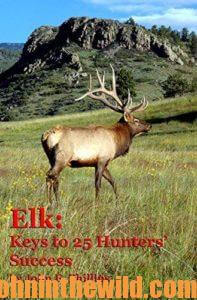 To learn more about hunting elk successfully, check out John E. Phillips’ book, “Elk: Keys to 25 Hunters’ Success,” available in Kindle, print and Audible versions at https://amzn.to/2IDszQk. You may have to copy and paste this click into your browser. (When you click on this book, notice on the left where Amazon allows you to read 10% of the book for free).
To learn more about hunting elk successfully, check out John E. Phillips’ book, “Elk: Keys to 25 Hunters’ Success,” available in Kindle, print and Audible versions at https://amzn.to/2IDszQk. You may have to copy and paste this click into your browser. (When you click on this book, notice on the left where Amazon allows you to read 10% of the book for free).
Tomorrow: You Can Find Elk Where You’ve Never Hunted Before with Shawn Fulton

